Review of Current State-of-the-Art Research on Photovoltaic Soiling, Anti-Reflective Coating, and Solar Roads Deployment Supported by a Pilot Experiment on a PV Road
Abstract
:1. Introduction
2. Aim and Organization of this Paper
3. Factors Affecting PV Soiling
- (1)
- Tilt Angle: because dust particles tend to accumulate more on the horizontal surface than the tilted angles, the effect of gravity will increase with the increasing tilt angle [16]. In Figure 2, a contaminated PV module will suffer either reflections or absorption losses, however, when there is a greater angle of incidence than 0°, there will be a greater amount of reflection loss [17].
- (2)
- Orientation: PV modules exposed to the wind will accumulate dust at a higher rate than when they are facing the opposite direction with the wind blowing straight down on them [18].
- (3)
- Ambient Temperature: a recent study has found that temperature affects the viscosity of the air, which affects the concentration of airborne particles. Therefore, when the temperature decreases, the viscosity of the air will increase. This, in turn, will lead to an increase in the concentration of aerosols in the atmosphere, resulting in a higher soiling rate [19].
- (4)
- Relative Humidity: an increasing body of evidence indicates that particles adhere more easily to surfaces at high relative humidity [20]. An experiment that was carried out in Saudi Arabia in 2014 measured the adhesion strength between two different flat silica and 48 μm silica beads in different humidity levels. It was found that when the humidity increases by at least 20% RH, it can reduce the PV module’s output power by 8% [21].
- (5)
- Characteristics of the site: Land features are considered by many to be a contributing factor to increasing aerosol levels, which in turn increase soiling rates in that area [16]. As human activity occurs throughout an urban area, the density of particles that form the soil is influenced by the amount of human activity involved [22]. Additionally, forests influence pollination processes through the pollen and dried leaves they produce [23].
- (6)
- Wind Velocity: In terms of the wind’s impact, there are two main aspects to consider. One is that as the wind speed increases, it will cause the accumulation of dust to increase [24]. In some papers, however, there has been an argument that with the increase in wind speed, the panels will be cleaned against dust deposition if they are originally oriented towards the wind movement [25].
- (7)
- PV Technology: PV module degradation caused by soiling is mainly determined by the type of PV technology. A study found that monocrystalline PV modules degraded by 20%, while polycrystalline PV modules degraded by 16% with a dust accumulation rate of 0.98 gm/cm2 [26].
- (8)
- Dust Properties: Depending on their chemical, biological and physical properties, dust particles can display various characteristics. Due to this, the amount of dust that will accumulate will differ depending on the properties of the surface. For example, on a PV surface, small particles of dust can settle more readily than large particles [27].
- (9)
- Aerosols, fungi, and other contaminants: As a result of the absorption and scattering of sunlight in specific wavelength ranges by atmospheric aerosols, solar energy applications experience significant spectral shifts [28,29]. In several studies, fungal growth on solar panels and glass coupons aged at least 6 months has been shown to contribute to soiling through biological growth, particularly fungal growth on the surfaces of the panels [30,31] Furthermore, pollen behaves as a seasonal, local-scale soiling agent. Pollen can build up on PV modules, especially near the lower edge of the modules, reducing energy conversion [32].
4. PV Soiling Mitigation and Cleaning Techniques
- It is expected that the ASC will have exceptional dust repellency.
- ASC optical transmittance should be equal to or greater than solar cover glass.
- The durability of an ASC should be similar to that of a solar PV panel (25 years).
5. PV Solar Roads
- Voc = 0.66 V
- Isc = 4.5 A
- Vmpp = 0.59 V
- Impp = 4.2 A
- Power = 2.48 W
6. Discussion
7. Conclusions
- There are three layers in the solar pavement structure: the translucent layer on top, the photovoltaic layer in the middle, and the protective layer at the bottom. The three layers of the solar pavement must be coordinated for it to function normally. Solid plate and hollow plate structures are the most widely used structures for solar pavements. There is no fracture failure risk with the solid plate structure, as it has good bearing capacity and stability, but the panel is flat, and the high-efficiency monocrystalline silicon cell cannot be used. A fracturing failure of the battery panel is not a problem for the hollow plate structure, and the angle of placement can be adjusted. Nevertheless, hollow plates require more packaging technology and water-resistance and drainage capabilities.
- By using solar pavements, smart pavements can be powered sustainably, renewable energy sources can be decentralized, power lines can be avoided, and energy losses can be avoided, smart transportation and electric vehicles can be developed, road ice and snow melting is effectively reduced, greenhouse gas emissions are reduced, urban heat island effects are mitigated, and jobs are created while fuel/energy consumption is reduced in the project or nearby buildings. Testing projects have not survived or been as durable as expected due to traffic loads, degradation of material performance, and environmental factors (temperature, humidity, dust). Solar pavements that can withstand traffic loads while generating efficient electricity do not exist at present thanks to a lack of suitable technology. There are still challenges to be overcome when it comes to structures, materials, and collection circuits.
- Based on a sample analysis of two PV modules in a solar road system, it has been found that the output power can degrade by at least 18% even in its first 30 days of operation without considering any coating device and sub-layer of the panels. The reason for this is due to the solar cells’ low resistance to heavy loads and continuous pressure causing massive cracking and breakdown. Hence, the surface of the road must be sufficiently rough to meet the requirements of skid resistance, while it must also be sufficiently smooth to allow good light transmission. Therefore, a balance should be made between the light transmission effect and skid resistance of the surface due to the apparent contradiction between skid resistance and light transmittance.
- There are several factors that affect solar pavements’ ability to generate power, including location, climate, and uncertain factors such as environment and traffic. To adapt to changing operating conditions, further research can optimize solar pavement circuit designs based on the characteristics of the road environment, thereby increasing the flexibility of load management by enabling the solar pavements’ power generation to meet the demand of the load. Furthermore, appropriate energy storage technology can be developed to ensure that the solar pavements can meet the load demand. The cell coating elements also need to be backed up by appropriate circuit design.
Author Contributions
Funding
Conflicts of Interest
References
- De Jesus, M.A.M.L.; Timò, G.; Agustín-Sáenz, C.; Braceras, I.; Cornelli, M.; de Mello Ferreira, A. Anti-soiling coatings for solar cell cover glass: Climate and Surface Properties Influence. Sol. Energy Mater. Sol. Cells 2018, 185, 517–523. [Google Scholar] [CrossRef]
- Maghami, M.R.; Hizam, H.; Gomes, C.; Radzi, M.A.; Rezadad, M.I.; Hajighorbani, S. Power loss due to soiling on Solar Panel: A Review. Renew. Sustain. Energy Rev. 2016, 59, 1307–1316. [Google Scholar] [CrossRef] [Green Version]
- Khan, M.Z.; Ghaffar, A.; Bahattab, M.A.; Mirza, M.; Lange, K.; Abaalkheel, I.M.; Alqahtani, M.H.; Aldhuwaile, A.A.; Alqahtani, S.H.; Qasem, H.; et al. Outdoor performance of anti-soiling coatings in various climates of Saudi Arabia. Sol. Energy Mater. Sol. Cells 2022, 235, 111470. [Google Scholar] [CrossRef]
- Ilse, K.K.; Figgis, B.W.; Naumann, V.; Hagendorf, C.; Bagdahn, J. Fundamentals of soiling processes on photovoltaic modules. Renew. Sustain. Energy Rev. 2018, 98, 239–254. [Google Scholar] [CrossRef]
- Conceição, R.; González-Aguilar, J.; Merrouni, A.A.; Romero, M. Soiling effect in Solar Energy Conversion Systems: A Review. Renew. Sustain. Energy Rev. 2022, 162, 112434. [Google Scholar] [CrossRef]
- Birant, G.; de Wild, J.; Meuris, M.; Poortmans, J.; Vermang, B. Dielectric-Based Rear Surface Passivation Approaches for Cu(In,Ga)Se2 Solar Cells—A Review. Appl. Sci. 2019, 9, 677. [Google Scholar] [CrossRef] [Green Version]
- Romeo, A.; Artegiani, E. CdTe-Based Thin Film Solar Cells: Past, Present and Future. Energies 2021, 14, 1684. [Google Scholar] [CrossRef]
- Chu, Y.; Ho, C.; Lee, Y.; Li, B. Development of a Solar-Powered Unmanned Aerial Vehicle for Extended Flight Endurance. Drones 2021, 5, 44. [Google Scholar] [CrossRef]
- Salhi, B. The Photovoltaic Cell Based on CIGS: Principles and Technologies. Materials 2022, 15, 1908. [Google Scholar] [CrossRef]
- Ava, T.T.; Al Mamun, A.; Marsillac, S.; Namkoong, G. A Review: Thermal Stability of Methylammonium Lead Halide Based Perovskite Solar Cells. Appl. Sci. 2019, 9, 188. [Google Scholar] [CrossRef]
- Saadah, M.; Hernandez, E.; Balandin, A.A. Thermal Management of Concentrated Multi-Junction Solar Cells with Graphene-Enhanced Thermal Interface Materials. Appl. Sci. 2017, 7, 589. [Google Scholar] [CrossRef] [Green Version]
- Shi, Z.; Jayatissa, A.H. Perovskites-Based Solar Cells: A Review of Recent Progress, Materials and Processing Methods. Materials 2018, 11, 729. [Google Scholar] [CrossRef] [Green Version]
- Uddin, A.; Upama, M.B.; Yi, H.; Duan, L. Encapsulation of Organic and Perovskite Solar Cells: A Review. Coatings 2019, 9, 65. [Google Scholar] [CrossRef] [Green Version]
- Konstantakou, M.; Perganti, D.; Falaras, P.; Stergiopoulos, T. Anti-Solvent Crystallization Strategies for Highly Efficient Perovskite Solar Cells. Crystals 2017, 7, 291. [Google Scholar] [CrossRef] [Green Version]
- Kim, T.; Lim, J.; Song, S. Recent Progress and Challenges of Electron Transport Layers in Organic–Inorganic Perovskite Solar Cells. Energies 2020, 13, 5572. [Google Scholar] [CrossRef]
- Shaju, A.; Chacko, R. Soiling of photovoltaic modules—Review. In IOP Conference Series: Materials Science and Engineering; IOP Publishing: Bristol, UK, 2018; Volume 396, p. 012050. [Google Scholar]
- Laarabi, B.; El Baqqal, Y.; Rajasekar, N.; Barhdadi, A. Updated review on Soiling of Solar Photovoltaic Systems Morocco and India contributions. J. Clean. Prod. 2021, 311, 127608. [Google Scholar] [CrossRef]
- Jamil, W.J.; Abdul Rahman, H.; Shaari, S.; Salam, Z. Performance degradation of photovoltaic power system: Review on Mitigation Methods. Renew. Sustain. Energy Rev. 2017, 67, 876–891. [Google Scholar] [CrossRef]
- Miller, D.C.; Kurtz, S.R. Durability of fresnel lenses: A review specific to the concentrating photovoltaic application. Sol. Energy Mater. Sol. Cells 2011, 95, 2037–2068. [Google Scholar] [CrossRef]
- Kim, Y.; Wellum, G.; Mello, K.; Strawhecker, K.E.; Thoms, R.; Giaya, A.; Wyslouzil, B.E. Effects of relative humidity and particle and surface properties on particle resuspension rates. Aerosol Sci. Technol. 2016, 50, 339–352. [Google Scholar] [CrossRef] [Green Version]
- Said, S.A.M.; Walwil, H.M. Fundamental studies on dust fouling effects on PV module performance. Sol. Energy 2014, 107, 328–337. [Google Scholar] [CrossRef]
- Zaihidee, F.M.; Mekhilef, S.; Seyedmahmoudian, M.; Horan, B. Dust as an unalterable deteriorative factor affecting PV Panel’s efficiency: Why and how. Renew. Sustain. Energy Rev. 2016, 65, 1267–1278. [Google Scholar] [CrossRef]
- Appels, R.; Muthirayan, B.; Beerten, A.; Paesen, R.; Driesen, J.; Poortmans, J. The effect of dust deposition on photovoltaic modules. In Proceedings of the 2012 38th IEEE Photovoltaic Specialists Conference, Austin, TX, USA, 3–8 June 2012. [Google Scholar]
- Chiteka, K.; Arora, R.; Sridhara, S.N.; Enweremadu, C.C. Optimizing wind barrier and photovoltaic array configuration in soiling mitigation. Renew. Energy 2021, 163, 225–236. [Google Scholar] [CrossRef]
- Mekhilef, S.; Saidur, R.; Kamalisarvestani, M. Effect of dust, humidity and air velocity on efficiency of photovoltaic cells. Renew. Sustain. Energy Rev. 2012, 16, 2920–2925. [Google Scholar] [CrossRef]
- Ali, H.; Zafar, M.; Bashir, M.; Nasir, M.; Ali, M.; Siddiqui, A. Effect of dust deposition on the performance of photovoltaic modules in Taxila, Pakistan. Therm. Sci. 2017, 21, 915–923. [Google Scholar] [CrossRef]
- Tanesab, J.; Parlevliet, D.; Whale, J.; Urmee, T. The effect of dust with different morphologies on the performance degradation of photovoltaic modules. Sustain. Energy Technol. Assess. 2019, 31, 347–354. [Google Scholar] [CrossRef]
- Herman-Czezuch, A.; Mekeng, A.Z.; Meilinger, S.; Barry, J.; Kimiaie, N. Impact of aerosols on photovoltaic energy production using a spectrally resolved model chain: Case study of southern West Africa. Renew. Energy 2022, 194, 321–333. [Google Scholar] [CrossRef]
- Dumka, U.C.; Kosmopoulos, P.G.; Ningombam, S.S.; Masoom, A. Impact of Aerosol and Cloud on the Solar Energy Potential over the Central Gangetic Himalayan Region. Remote Sens. 2021, 13, 3248. [Google Scholar] [CrossRef]
- Valerino, M.; Ratnaparkhi, A.; Ghoroi, C.; Bergin, M. Seasonal photovoltaic soiling: Analysis of size and composition of deposited particulate matter. Sol. Energy 2021, 227, 44–55. [Google Scholar] [CrossRef]
- Einhorn, A.; Micheli, L.; Miller, D.C.; Simpson, L.J.; Moutinho, H.R.; To, B.; Lanaghan, C.L.; Muller, M.T.; Toth, S.; John, J.J.; et al. Evaluation of soiling and potential mitigation approaches on photovoltaic glass. IEEE J. Photovolt. 2018, 9, 233–239. [Google Scholar] [CrossRef]
- Sanz Saiz, C.; Polo Martínez, J.; Martín Chivelet, N. Influence of Pollen on Solar Photovoltaic Energy: Literature Review and Experimental Testing with Pollen. Appl. Sci. 2020, 10, 4733. [Google Scholar] [CrossRef]
- Said, S.A.M.; Hassan, G.; Walwil, H.M.; Al-Aqeeli, N. The effect of environmental factors and dust accumulation on photovoltaic modules and dust-accumulation mitigation strategies. Renew. Sustain. Energy Rev. 2018, 82, 743–760. [Google Scholar] [CrossRef]
- Majeed, R.; Waqas, A.; Sami, H.; Ali, M.; Shahzad, N. Experimental investigation of soiling losses and a novel cost-effective cleaning system for PV modules. Sol. Energy 2020, 201, 298–306. [Google Scholar] [CrossRef]
- Maindad, N.; Gadhave, A.; Satpute, S.; Nanda, B. Automatic Solar Panel Cleaning System. In Proceedings of the 2nd International Conference on Communication & Information Processing (ICCIP), Singapore, 26–29 November 2020. [Google Scholar]
- Sayyah, A.; Eriksen, R.S.; Horenstein, M.N.; Mazumder, M.K. Performance analysis of electrodynamic screens based on residual particle size distribution. IEEE J. Photovolt. 2017, 7, 221–229. [Google Scholar] [CrossRef]
- Dhimish, M.; Tyrrell, A.M. Power loss and hotspot analysis for photovoltaic modules affected by potential induced degradation. Npj Mater. Degrad. 2022, 6, 11. [Google Scholar] [CrossRef]
- Wette, J.; Fernández-García, A.; Sutter, F.; Buendía-Martínez, F.; Argüelles-Arízcun, D.; Azpitarte, I.; Pérez, G. Water saving in CSP plants by a novel hydrophilic anti-soiling coating for solar reflectors. Coatings 2019, 9, 739. [Google Scholar] [CrossRef] [Green Version]
- Conceição, R.; Silva, H.G.; Mirão, J.; Gostein, M.; Fialho, L.; Narvarte, L.; Collares-Pereira, M. Saharan dust transport to Europe and its impact on photovoltaic performance: A case study of soiling in Portugal. Sol. Energy 2018, 160, 94–102. [Google Scholar] [CrossRef]
- Wette, J.; Sutter, F.; Fernández-García, A. Evaluation of anti-soiling coatings for CSP reflectors under realistic outdoor conditions. Sol. Energy 2019, 191, 574–584. [Google Scholar] [CrossRef]
- Adak, D.; Bhattacharyya, R.; Barshilia, H.C. A state-of-the-art review on the multifunctional self-cleaning nanostructured coatings for PV panels, CSP mirrors and related solar devices. Renew. Sustain. Energy Rev. 2022, 159, 112145. [Google Scholar] [CrossRef]
- Lisco, F.; Bukhari, F.; Uličná, S.; Isbilir, K.; Barth, K.L.; Taylor, A.; Walls, J.M. Degradation of hydrophobic, anti-soiling coatings for Solar Module cover glass. Energies 2020, 13, 3811. [Google Scholar] [CrossRef]
- Hossain, M.I.; Ali, A.; Bermudez Benito, V.; Figgis, B.; Aïssa, B. Anti-Soiling Coatings for Enhancement of PV Panel Performance in Desert Environment: A Critical Review and Market Overview. Materials 2022, 15, 7139. [Google Scholar] [CrossRef]
- Oehler, G.C.; Lisco, F.; Bukhari, F.; Uličná, S.; Strauss, B.; Barth, K.L.; Walls, J.M. Testing the durability of anti-soiling coatings for solar cover glass by outdoor exposure in Denmark. Energies 2020, 13, 299. [Google Scholar] [CrossRef] [Green Version]
- Pei, J.; Zhou, B.; Lyu, L. E-road: The largest energy supply of the future? Appl. Energy 2019, 241, 174–183. [Google Scholar] [CrossRef]
- Dai, W.; Shi, B.; Li, T.; Goh, H.H.; Li, J. Power flow analysis considering solar road generation. Energy Rep. 2022, 8, 531–536. [Google Scholar] [CrossRef]
- Jia, L.; Ma, J.; Cheng, P.; Liu, Y. A perspective on solar energy-powered road and rail transportation in China. CSEE J. Power Energy Syst. 2020, 6, 760–771. [Google Scholar]
- Pillai, U. Drivers of cost reduction in solar photovoltaics. Energy Econ. 2015, 50, 286–293. [Google Scholar] [CrossRef]
- Xiang, B.; Cao, X.; Yuan, Y.; Sun, L.; Wu, H.; Haghighat, F. A novel hybrid energy system combined with solar-road and soil-regenerator: Dynamic model and operational performance. Energy Convers. Manag. 2018, 156, 376–387. [Google Scholar] [CrossRef] [Green Version]
- Kehagia, F.; Mirabella, S.; Psomopoulos, C.S. Solar pavement: A new source of energy. In Bituminous Mixtures and Pavements VII; CRC Press: Boca Raton, FL, USA, 2019; pp. 441–447. [Google Scholar]
- Prasanth, V.; Scheele, N.; Visser, E.; Shekhar, A.; Mouli, G.R.; Bauer, P.; Silvestser, S. Green energy based inductive self-healing highways of the future. In Proceedings of the 2016 IEEE Transportation Electrification Conference and Expo (ITEC), Dearborn, MI, USA, 27–29 June 2016. [Google Scholar]
- Dezfooli, A.S.; Nejad, F.M.; Zakeri, H.; Kazemifard, S. Solar pavement: A new emerging technology. Sol. Energy 2017, 149, 272–284. [Google Scholar] [CrossRef]
- Li, Y.; Zhang, J.; Cao, Y.; Hu, Q.; Guo, X. Design and evaluation of light-transmitting concrete (LTC) using waste tempered glass: A novel concrete for future Photovoltaic Road. Constr. Build. Mater. 2021, 280, 122551. [Google Scholar] [CrossRef]
- Hossain, M.F.; Dessouky, S.; Biten, A.B.; Montoya, A.; Fernandez, D. Harvesting solar energy from asphalt pavement. Sustainability 2021, 13, 12807. [Google Scholar] [CrossRef]
- Dhimish, M.; d’Alessandro, V.; Daliento, S. Investigating the impact of cracks on solar cells performance: Analysis based on nonuniform and uniform crack distributions. IEEE Trans. Ind. Inform. 2022, 18, 1684–1693. [Google Scholar] [CrossRef]
- Dhimish, M.; Mather, P. Development of novel Solar Cell Micro Crack Detection Technique. IEEE Trans. Semicond. Manuf. 2019, 32, 277–285. [Google Scholar] [CrossRef]
- Hilton, A.M.; Cahill, A.D.; Heller, E.R. A comparison of electroluminescence spectra from plan view and cross-sectioned Algan/Gan devices. IEEE Trans. Electron Devices 2018, 65, 59–63. [Google Scholar] [CrossRef]
- Dhimish, M.; Holmes, V.; Dales, M.; Mehrdadi, B. Effect of micro cracks on photovoltaic output power: Case study based on Real time long term data measurements. Micro Nano Lett. 2017, 12, 803–807. [Google Scholar] [CrossRef]
- Dhimish, M.; Mather, P. Ultrafast high-resolution solar cell cracks detection process. IEEE Trans. Ind. Inform. 2020, 16, 4769–4777. [Google Scholar] [CrossRef] [Green Version]
- Duru, R.; Le Cunff, D.; Cannac, M.; Mica, I.; Baruchel, J.; Tran-Thi, T.-N.; Bremond, G. Photoluminescence imaging for buried defects detection in silicon: Assessment and use-cases. IEEE Trans. Semicond. Manuf. 2019, 32, 23–30. [Google Scholar] [CrossRef]
- Nos, O.; Favre, W.; Jay, F.; Ozanne, F.; Valla, A.; Alvarez, J.; Muñoz, D.; Ribeyron, P.J. Quality Control method based on photoluminescence imaging for the performance prediction of C-Si/a-si:H heterojunction solar cells in industrial production lines. Sol. Energy Mater. Sol. Cells 2016, 144, 210–220. [Google Scholar] [CrossRef]
- Bhoopathy, R.; Kunz, O.; Juhl, M.; Trupke, T.; Hameiri, Z. Outdoor photoluminescence imaging of photovoltaic modules with Sunlight Excitation. Prog. Photovolt. Res. Appl. 2017, 26, 69–73. [Google Scholar] [CrossRef]
- Dhimish, M. Thermal impact on the performance ratio of photovoltaic systems: A case study of 8000 photovoltaic installations. Case Stud. Therm. Eng. 2020, 21, 100693. [Google Scholar] [CrossRef]
- Henry, C.; Poudel, S.; Lee, S.-W.; Jeong, H. Automatic detection system of deteriorated PV modules using drone with Thermal camera. Appl. Sci. 2020, 10, 3802. [Google Scholar] [CrossRef]
- Zhang, P.; Zhang, L.; Wu, T.; Zhang, H.; Sun, X. Detection and location of fouling on photovoltaic panels using a drone-mounted infrared thermography system. J. Appl. Remote Sens. 2017, 11, 016026. [Google Scholar] [CrossRef]
- Alsafasfeh, M.; Abdel-Qader, I.; Bazuin, B.; Alsafasfeh, Q.; Su, W. Unsupervised fault detection and analysis for large photovoltaic systems using drones and Machine Vision. Energies 2018, 11, 2252. [Google Scholar] [CrossRef]
- Khan, F.; Rezgui, B.D.; Kim, J.H. Reliability Study of c-Si PV Module Mounted on a Concrete Slab by Thermal Cycling Using Electroluminescence Scanning: Application in Future Solar Roadways. Materials 2020, 13, 470. [Google Scholar] [CrossRef] [PubMed] [Green Version]
- Khan, F.; Kim, J.H. Performance degradation analysis of C-si PV modules mounted on a concrete slab under hot-humid conditions using electroluminescence scanning technique for potential utilization in future solar roadways. Materials 2019, 12, 4047. [Google Scholar] [CrossRef] [PubMed] [Green Version]
- Hu, H.; Zha, X.; Li, Z.; Lv, R. Preparation and performance study of solar pavement panel based on transparent resin-concrete. Sustain. Energy Technol. Assess. 2022, 52, 102169. [Google Scholar] [CrossRef]
- Le Touz, N.; Dumoulin, J.; Piau, J.-M. Multi-physics FEM model of solar hybrid roads for energy harvesting performance evaluation in presence of semi-transparent or opaque pavement surface layer. In International Heat Transfer Conference Digital Library; Begel House Inc.: Danbury, CT, USA, 2018. [Google Scholar]
- Vizzari, D.; Chailleux, E.; Gennesseaux, E.; Lavaud, S.; Vignard, N. Viscoelastic characterisation of transparent binders for application on Solar Roads. Road Mater. Pavement Des. 2019, 20, S112–S126. [Google Scholar] [CrossRef]
- Settou, B.; Settou, N.; Gouareh, A.; Negrou, B.; Mokhtara, C.; Messaoudi, D. GIS-based method for future prospect of energy supply in Algerian road transport sector using Solar Roads Technology. Energy Procedia 2019, 162, 221–230. [Google Scholar] [CrossRef]
- Liu, Z.; Fei, T. Road PV production estimation at City Scale: A predictive model towards feasible assessing regional energy generation from Solar Roads. J. Clean. Prod. 2021, 321, 129010. [Google Scholar] [CrossRef]
- Lee, K.; Cho, S.B.; Yi, J.; Chang, H.S. Simplified recovery process for resistive solder bond (RSB) hotspots caused by poor soldering of crystalline silicon photovoltaic modules using resin. Energies 2022, 15, 4623. [Google Scholar] [CrossRef]
- Lopes, D.; Conceição, R.; Silva, H.G.; Aranzabe, E.; Pérez, G.; Collares-Pereira, M. Anti-soiling coating performance assessment on the reduction of soiling effect in second-surface solar mirror. Sol. Energy 2019, 194, 478–484. [Google Scholar] [CrossRef]
- Zhang, J.; Ai, L.; Lin, S.; Lan, P.; Lu, Y.; Dai, N.; Tan, R.; Fan, B.; Song, W. Preparation of humidity, abrasion, and dust resistant antireflection coatings for photovoltaic modules via dual precursor modification and hybridization of hollow silica nanospheres. Sol. Energy Mater. Sol. Cells 2019, 192, 188–196. [Google Scholar] [CrossRef]
- Joshi, D.N.; Atchuta, S.R.; Lokeswara Reddy, Y.; Naveen Kumar, A.; Sakthivel, S. Super-hydrophilic broadband anti-reflective coating with high weather stability for solar and optical applications. Sol. Energy Mater. Sol. Cells 2019, 200, 110023. [Google Scholar] [CrossRef]
- Sutha, S.; Suresh, S.; Raj, B.; Ravi, K.R. Transparent alumina based superhydrophobic self–cleaning coatings for solar cell cover glass applications. Sol. Energy Mater. Sol. Cells 2017, 165, 128–137. [Google Scholar] [CrossRef]
- Marchand, D.J.; Dilworth, Z.R.; Stauffer, R.J.; Hsiao, E.; Kim, J.-H.; Kang, J.-G.; Kim, S.H. Atmospheric RF plasma deposition of superhydrophobic coatings using tetramethylsilane precursor. Surf. Coat. Technol. 2013, 234, 14–20. [Google Scholar] [CrossRef]
- Bosch-Jimenez, P.; Martínez, M.; Hipólito, Á.; Rubia, O.D.L.; Pirriera, M.D.; Cantos, B.; Álvarez, A. NODUSTPV project: Development and testing of anti-soiling coatings. In AIP Conference Proceedings; AIP Publishing LLC: Melville, NY, USA, 2018; p. 020002. [Google Scholar]
- Sagar, R.; Rao, A. Nanoscale tio2 and TA2O5 as efficient antireflection coatings on commercial monocrystalline silicon solar cell. J. Alloys Compd. 2021, 862, 158464. [Google Scholar] [CrossRef]
- Ekinci, S.Y.; Sancakli, S.; Adam, L.A.W.; Walls, J.M. Performance and durability of thin film solar cells via testing the abrasion resistance of broadband anti-reflection coatings. J. Energy Syst. 2022, 6, 33–45. [Google Scholar] [CrossRef]
- Shah, D.K.; KC, D.; Umar, A.; Algadi, H.; Akhtar, M.S.; Yang, O.-B. Influence of efficient thickness of antireflection coating layer of HFO2 for crystalline silicon solar cell. Inorganics 2022, 10, 171. [Google Scholar] [CrossRef]
- Makableh, Y.F.; Vasan, R.; Sarker, J.C.; Nusir, A.I.; Seal, S.; Manasreh, M.O. Enhancement of gaas solar cell performance by using a zno sol–gel anti-reflection coating. Sol. Energy Mater. Sol. Cells 2014, 123, 178–182. [Google Scholar] [CrossRef]
- Makableh, Y.F.; Al-Fandi, M.; Khasawneh, M.; Tavares, C.J. Comprehensive design analysis of zno anti-reflection nanostructures for SI solar cells. Superlattices Microstruct. 2018, 124, 1–9. [Google Scholar]
- Juhász Junger, I.; Wehlage, D.; Böttjer, R.; Grothe, T.; Juhász, L.; Grassmann, C.; Blachowicz, T.; Ehrmann, A. Dye-Sensitized Solar Cells with Electrospun Nanofiber Mat-Based Counter Electrodes. Materials 2018, 11, 1604. [Google Scholar] [CrossRef] [Green Version]
- Višniakov, J.; Janulevičius, A.; Maneikis, A.; Matulaitienė, I.; Selskis, A.; Stanionytė, S.; Suchodolskis, A. Antireflection tio2 coatings on textured surface grown by HiPIMS. Thin Solid Film. 2017, 628, 190–195. [Google Scholar] [CrossRef]
- Pendse, S.; Chandra Sekhar Reddy, K.; Narendra, C.; Murugan, K.; Sakthivel, S. Dual-functional broadband antireflective and hydrophobic films for solar and optical applications. Sol. Energy 2018, 163, 425–433. [Google Scholar] [CrossRef]
- Shin, B.-K.; Lee, T.-I.; Xiong, J.; Hwang, C.; Noh, G.; Cho, J.-H.; Myoung, J.-M. Bottom-up grown zno nanorods for an antireflective moth-eye structure on Cuingase2 Solar Cells. Sol. Energy Mater. Sol. Cells 2011, 95, 2650–2654. [Google Scholar] [CrossRef]
- Makableh, Y.F.; Alzubi, H.; Tashtoush, G. Design and Optimization of the Antireflective Coating Properties of Silicon Solar Cells by Using Response Surface Methodology. Coatings 2021, 11, 721. [Google Scholar] [CrossRef]
- Xie, H.; Huang, H.-X.; Peng, Y.-J. Rapid fabrication of bio-inspired nanostructure with hydrophobicity and antireflectivity on polystyrene surface replicating from Cicada Wings. Nanoscale 2017, 9, 11951–11958. [Google Scholar] [CrossRef] [PubMed]
- Tao, C.; Zou, X.; Du, K.; Zhou, G.; Yan, H.; Yuan, X.; Zhang, L. Fabrication of robust, self-cleaning, broadband tio2sio2 double-layer antireflective coatings with closed-pore structure through a surface sol-gel process. J. Alloys Compd. 2018, 747, 43–49. [Google Scholar] [CrossRef]
- Zhou, B.; Pei, J.; Xue, B.; Guo, F.; Wen, Y.; Zhang, J.; Li, R. Solar/Road from ‘forced coexistence’ to ‘harmonious symbiosis’. Appl. Energy 2019, 255, 113808. [Google Scholar] [CrossRef]
- Shekhar, A.; Kumaravel, V.K.; Klerks, S.; de Wit, S.; Venugopal, P.; Narayan, N.; Bauer, P.; Isabella, O.; Zeman, M. Harvesting roadway solar energy—Performance of the installed infrastructure integrated PV Bike Path. IEEE J. Photovolt. 2018, 8, 1066–1073. [Google Scholar] [CrossRef]
- Vizzari, D.; Chailleux, E.; Lavaud, S.; Gennesseaux, E.; Bouron, S. Fraction factorial design of a novel semi-transparent layer for applications on Solar Roads. Infrastructures 2020, 5, 5. [Google Scholar] [CrossRef] [Green Version]
- Wu, L.; Yuan, Y.; Wu, H. Solar Road Power Generation Assessment based on coupled transportation and Power Distribution Systems. J. Phys. Conf. Ser. 2020, 1659, 012041. [Google Scholar] [CrossRef]
- Vincent, J. The Solar Roadway is Getting a (Tiny) Test Along Route 66. Available online: https://www.theverge.com/2016/7/1/12077414/solar-panel-roadway-public-test-route-66 (accessed on 15 November 2022).
- Calì, M.; Hajji, B.; Nitto, G.; Acri, A. The Design Value for Recycling End-of-Life Photovoltaic Panels. Appl. Sci. 2022, 12, 9092. [Google Scholar] [CrossRef]
- Kim, S.-H.; Baek, S.-C.; Choi, K.-B.; Park, S.-J. Design and Installation of 500-kW Floating Photovoltaic Structures Using High-Durability Steel. Energies 2020, 13, 4996. [Google Scholar] [CrossRef]
- Kudelas, D.; Taušová, M.; Tauš, P.; Gabániová, Ľ.; Koščo, J. Investigation of Operating Parameters and Degradation of Photovoltaic Panels in a Photovoltaic Power Plant. Energies 2019, 12, 3631. [Google Scholar] [CrossRef]
- Alamri, H.R.; Rezk, H.; Abd-Elbary, H.; Ziedan, H.A.; Elnozahy, A. Experimental Investigation to Improve the Energy Efficiency of Solar PV Panels Using Hydrophobic SiO2 Nanomaterial. Coatings 2020, 10, 503. [Google Scholar] [CrossRef]
- Bukowski, M.; Majewski, J.; Sobolewska, A. Macroeconomic Electric Energy Production Efficiency of Photovoltaic Panels in Single-Family Homes in Poland. Energies 2021, 14, 126. [Google Scholar] [CrossRef]


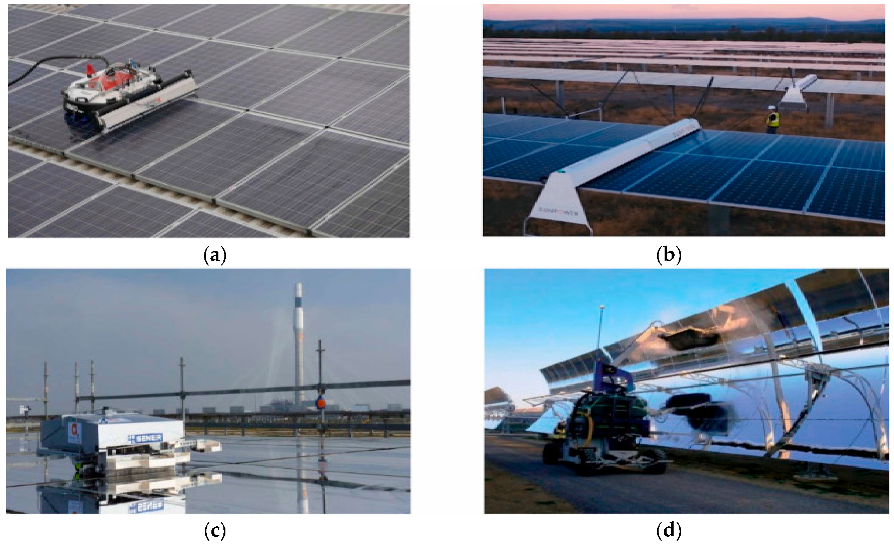

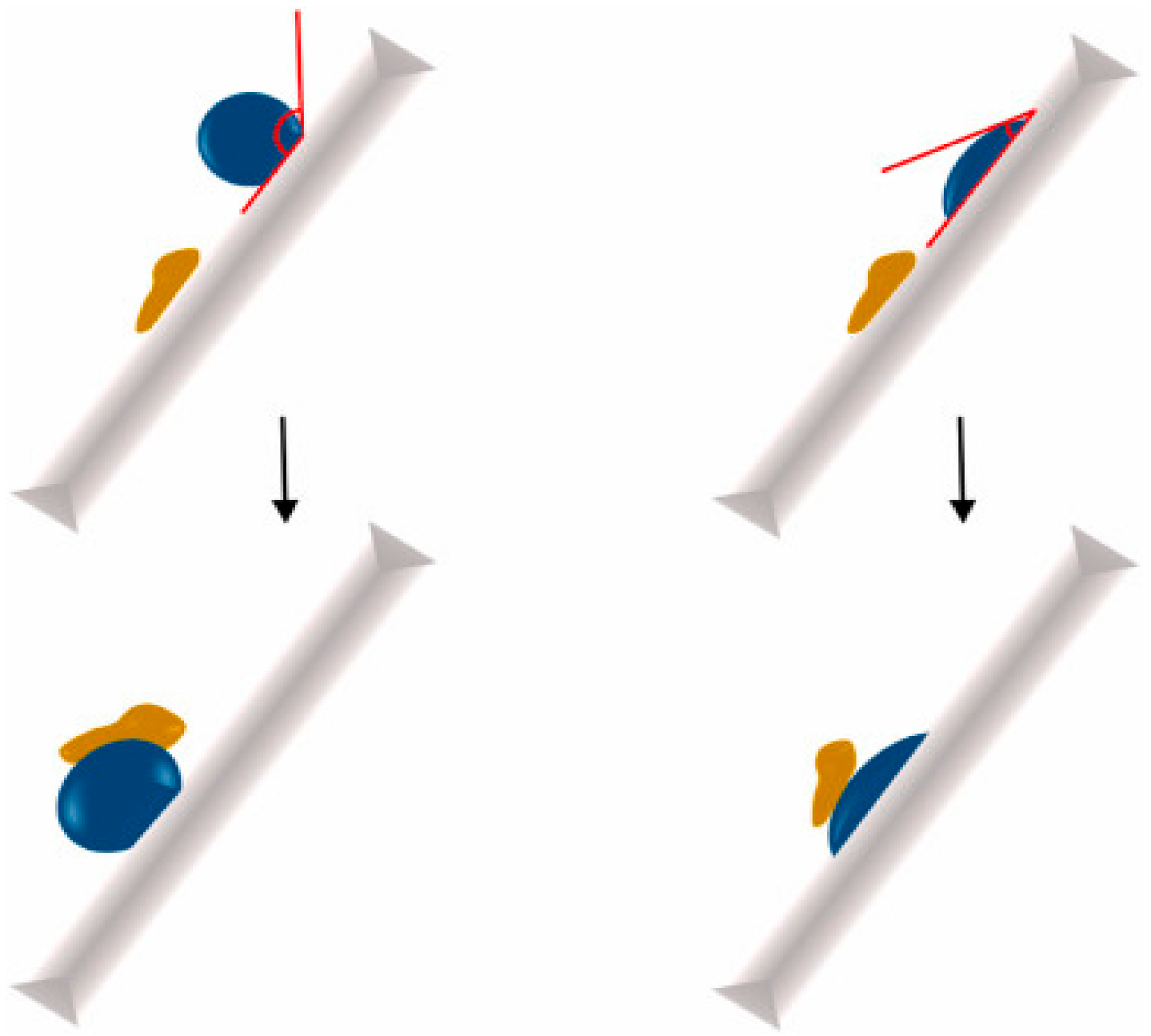

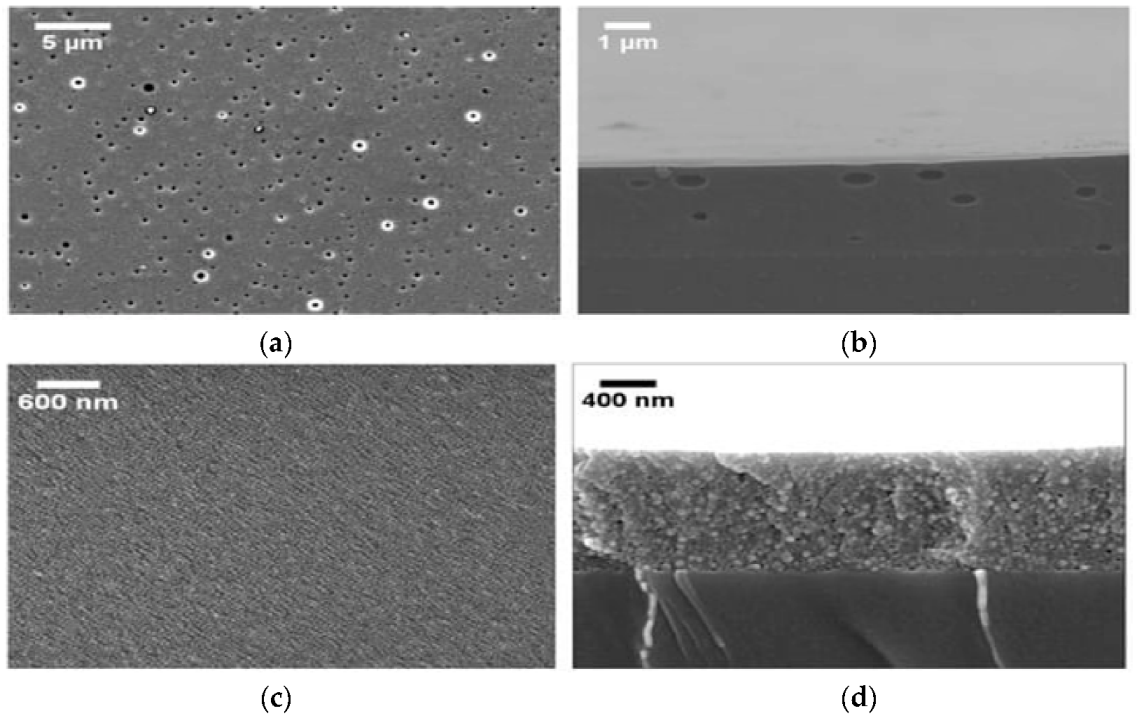


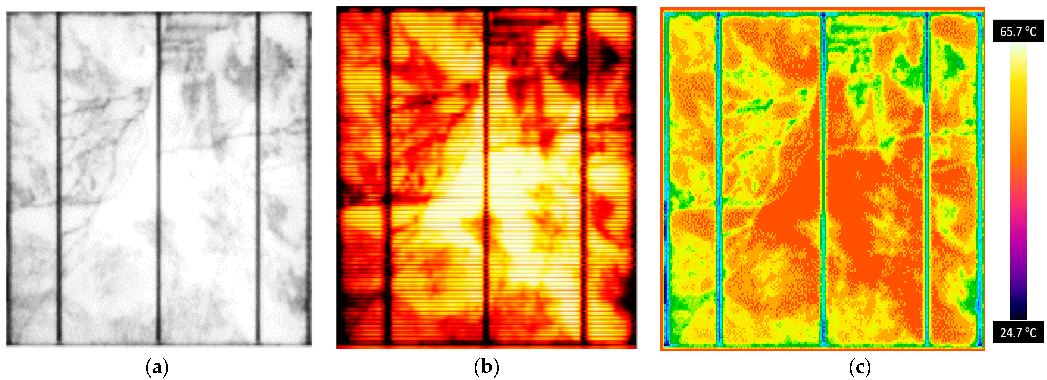
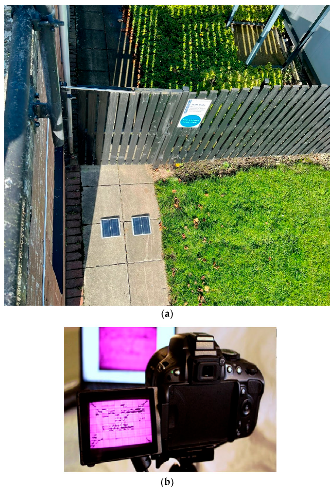
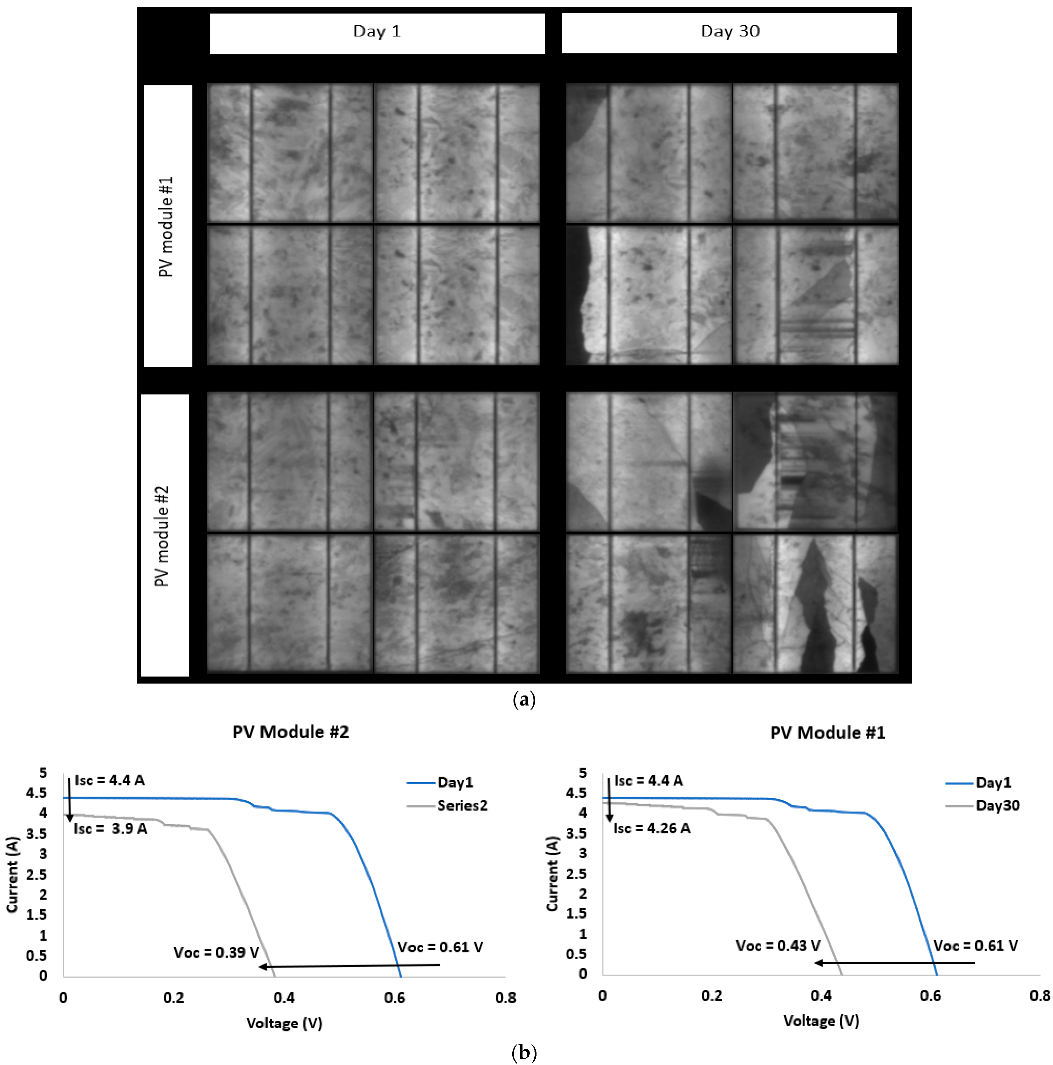


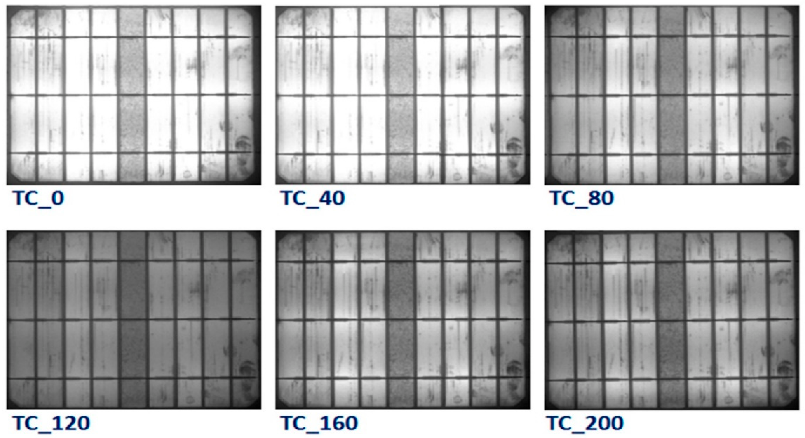

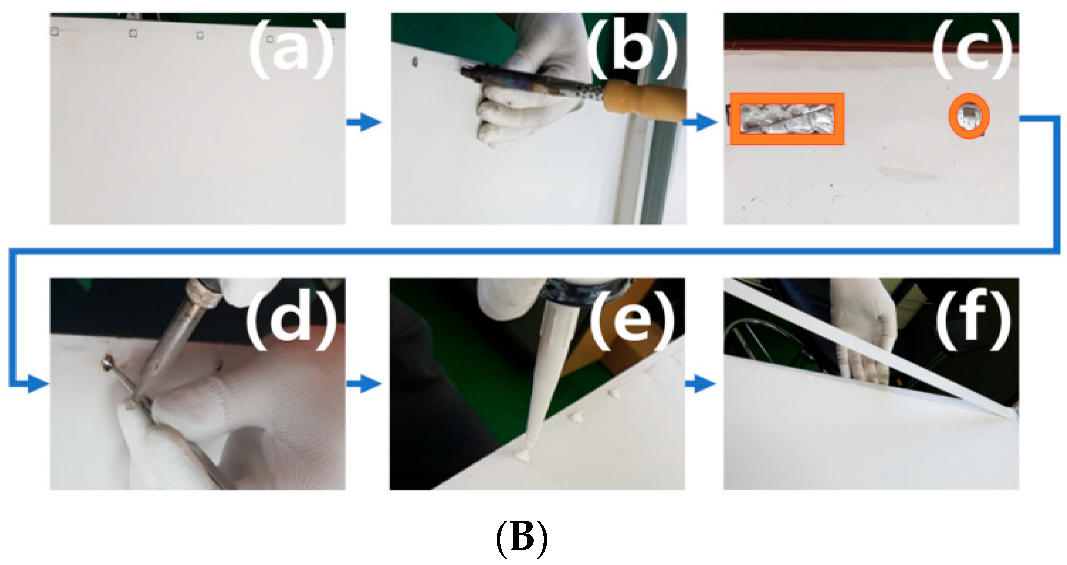

| ASC/ARC Materail | Reflectance % | Transmitance | Feasibility and Cost-Effectiveness | Durability | References |
|---|---|---|---|---|---|
| TiO2 | Less than 3 | As-yet unkown | Cost-effective, manufacturing in large scale | As-yet unkown | [87] |
| MgF2 | As-yet unkown | 97.03 | Cost-effective method and simple technique | Mechanically and environmentally stable | [88] |
| ZnO | 1.4 | As-yet unkown | Lab-preparable and cheap | As-yet unkown | [89,90] |
| Polystyrene | 4 | As-yet unkown | Efficacious and rapid fabricatiom | As-yet unkown | [91] |
| SiO2 and TiO2 (double layer) | As-yet unkown | 97.7 | Durable and resitve against temperature and | Facile and simple fabrication | [92] |
| Year | Location and Area | Cost | Material | Image of PV Setup | References |
|---|---|---|---|---|---|
| 2014 | 70 m long and 2 m wide in Krommenie, North Holland, The Netherlands | £1,300,000 | A 1 cm thick layer of thick glass is placed on top of fabricated slabs | 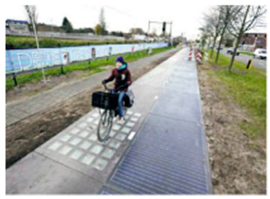 | [93,94] |
| 2016 | Road in the countryside, Normandy, France, 1 km | £4,300,000 | Polymers and resins coat the cells, making them transparent and resistant to traffic. |  | [93,95] |
| 2017 | ≈1.1 km in Jinan, China | £4,650,000 | The top is concrete permeable to light, the middle is thin amorphous silicon panels, and the bottom is waterproof insulate. |  | [93,96] |
Publisher’s Note: MDPI stays neutral with regard to jurisdictional claims in published maps and institutional affiliations. |
© 2022 by the authors. Licensee MDPI, Basel, Switzerland. This article is an open access article distributed under the terms and conditions of the Creative Commons Attribution (CC BY) license (https://creativecommons.org/licenses/by/4.0/).
Share and Cite
Hassan, S.; Dhimish, M. Review of Current State-of-the-Art Research on Photovoltaic Soiling, Anti-Reflective Coating, and Solar Roads Deployment Supported by a Pilot Experiment on a PV Road. Energies 2022, 15, 9620. https://doi.org/10.3390/en15249620
Hassan S, Dhimish M. Review of Current State-of-the-Art Research on Photovoltaic Soiling, Anti-Reflective Coating, and Solar Roads Deployment Supported by a Pilot Experiment on a PV Road. Energies. 2022; 15(24):9620. https://doi.org/10.3390/en15249620
Chicago/Turabian StyleHassan, Sharmarke, and Mahmoud Dhimish. 2022. "Review of Current State-of-the-Art Research on Photovoltaic Soiling, Anti-Reflective Coating, and Solar Roads Deployment Supported by a Pilot Experiment on a PV Road" Energies 15, no. 24: 9620. https://doi.org/10.3390/en15249620





